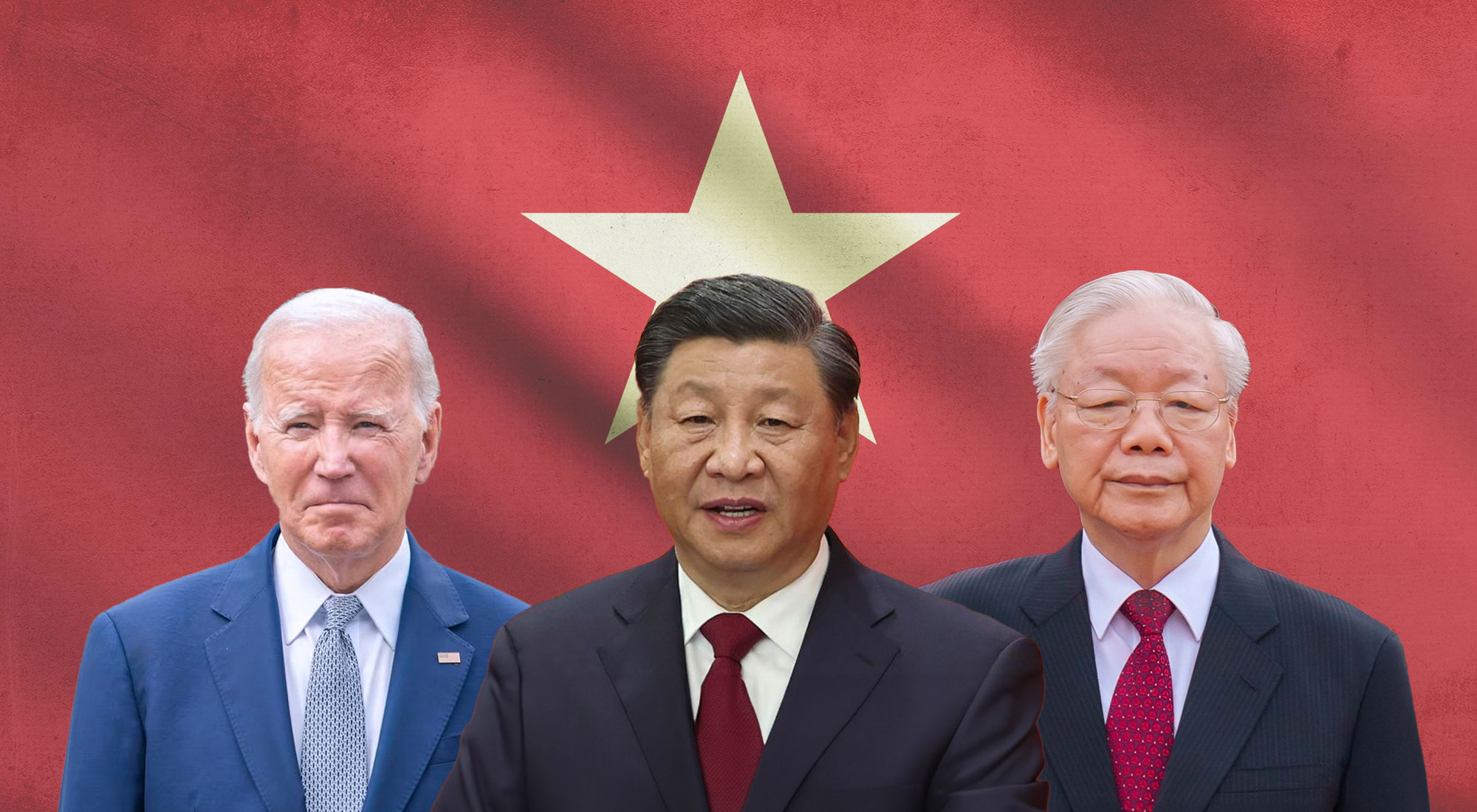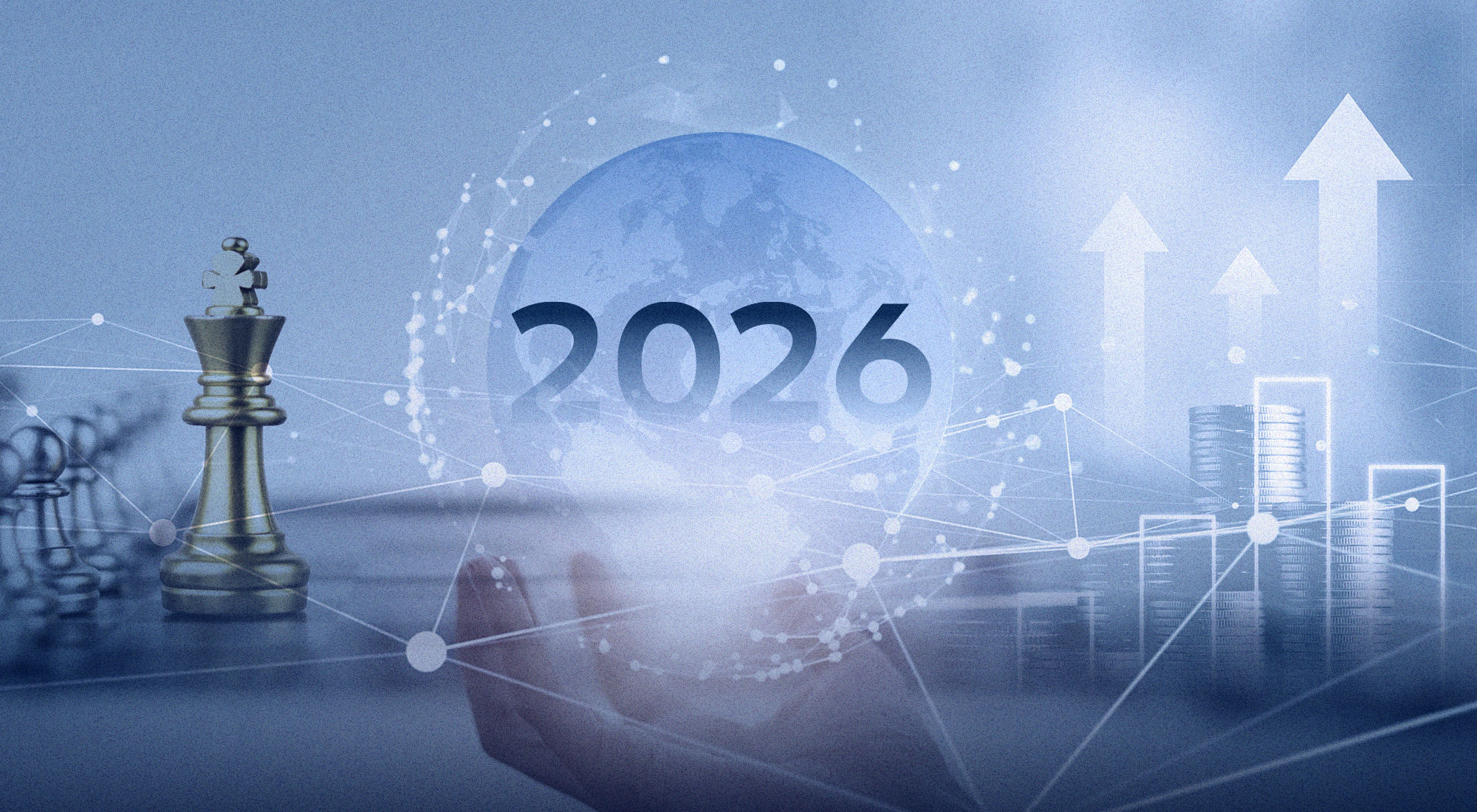If there had been an award for “The Country of the Year” in 2023, it should have arguably gone to Vietnam. Last year, the Southeast Asian nation became the only country on earth to host the leaders of the world’s two most powerful nations in quick succession. First came the historic state visit of U.S. President Joe Biden, who upgraded bilateral relations to a “comprehensive strategic partnership”. As a sweetener, the American leader was also accompanied by top American tech companies, which have been exploring prospects for semiconductor production in the new Asian economic dynamo. During his visit to Hanoi, the two former enemies, who fought a decades-long war at the height of the Cold War, explored closer diplomatic ties as well as military cooperation in the 21st century.[1]
Just over two months later, China’s paramount leader Xi Jinping made a state visit to Vietnam, the first in more than half-a-decade. The Southeast Asian nation spared no expense, ensuring the Chinese leader’s visit would usher in a “new golden era” of bilateral relations. Accompanied by the First Lady Peng Liyuan, Xi was greeted by a 21-gun salute and an army of flag-waving children. During his relatively short two-day visit, the Chinese leader met all the top leaders of Vietnam, including the de facto paramount leader and Vietnamese Communist Party chief Nguyễn Phú Trọng, President Vo Van Thuong, Prime Minister Pham Minh Chinh, and the Chairman of Vietnam’s National Assembly, Vuong Dinh Hue.[2]
In a highly symbolic act, Chinese President Xi paid his respects at the mausoleum of Vietnam’s founding father, Ho Chi Minh, a revolutionary leader who had forged a decades-long alliance with Communist China against Western powers in the early-20th century. In effect, Xi reminded everyone of the century-old party-to-party ties, at the highest levels, between China and Vietnam.[3] Following a series of high-stakes meetings, the two communist nations issued a 16-page joint statement, which underscored their shared commitment to elevating bilateral relations to new heights.[4]
Xi welcomed Vietnam’s commitment to join its “community of shared future” initiative, which seeks to create a more inclusive, post-Western order in Asia. On his part, the Vietnamese paramount leader, Phu Trong, characterized the Chinese leader’s visit as “a new historic milestone” and hailed a “new positioning of relations” between the two communist nations. In effect, Vietnam elevated China to the top of its diplomatic pecking order, even as the Southeast Asian nation continues to cultivate robust relations with other major powers.[5]
Crucially, the visit underscored a profound ideological convergence between the two sides. Not only did both China and Vietnam welcome a more “multipolar” order at the regional and international levels, but they have also expressed their shared concern over a potential Western-backed “color revolution” – akin to those that racked authoritarian regimes in Eastern Europe and North Africa in the past decades – amid a rapid expansion of their middle classes and the enduring influence of liberal globalization.[6]
Both sides also acknowledged outstanding issues in bilateral relations, most notably the festering maritime disputes in the South China Sea. Nevertheless, they both vowed to focus on diplomatic engagement as well as continued expansion of their robust trade and investment relations. After all, Vietnam’s emergence as a global manufacturing powerhouse has largely depended on the constant infusion of Chinese intermediate goods, capital, and technology.[7] With the intention of becoming a high-income nation by the middle of this century, Vietnam has every reason to try to keep its relations with China on an even keel.
Vietnam’s strategic predisposition toward China is part of its broader and evolving balancing strategy toward major powers. At once, the Southeast Asian nation is not only hedging its bets, but also adopting an increasingly sophisticated “multi-vector” and “multi-alignment” strategy that allows it to pursue fruitful relations with superpowers without compromising its own strategic autonomy.[8] China, the Asian superpower, which is facing an economic slowdown at home and a more hostile environment externally, also has all the reasons to maintain relatively stable ties with its dynamic southern neighbor.
Vietnam’s Grand Strategy
The political scientist Sulmaan Wasif Khan described “grand strategy” as the method by which a nation “marshals different forms of power to pursue national objectives.”[9] On his part, British strategist Sir Lawrence David Freedman argued that “the realm of strategy is [also] one of bargaining and persuasion,” since “conflicts can be resolved through building on shared interests or forging a winning coalition with the next available partner.”[10]
As far as contemporary Vietnam is concerned, its national strategy was shaped during the cauldron of the Cold War rather than by ancient history.[11] An oft-cited cliché about Vietnam is that its entire foreign policy has been largely a byproduct of its millennia-old struggle against China. As the Vietnamese foreign minister Nguyen Co Thach told the Western media in the final years of the Indo-China War, “We have known [China] for 4,000 years and have repelled them many times [accordingly]…China dominated us once for 1,000 years, and a second time for 30 years. In one century, there were three Chinese invasions.”[12]
Upon closer examination, however, it’s clear that Vietnam’s history with its powerful northern neighbor is far more nuanced. As one leading historian argued, proto-Vietnamese polities were “dependent upon a successful practice of mimicry” of sophisticated Chinese imperial bureaucratic traditions.[13] In fact, Nguyen, who rose to become Vietnam’s top diplomat shortly after the 1979 Vietnam-China border war, admitted that his country enjoyed a “[continuous] period of peace with [China for] 300 years.”[14]
It’s impossible to understand either the emergence of ancient Vietnam or the modern revolution that gave birth to contemporary Vietnam without taking the China factor into consideration. Modern China, both in its nationalist (Kuomintang) and communist (Maoist) iterations, proved to be a primary source of ideological and material support for the budding Vietnamese communist movement, which eventually defeated both the French and the Americans.[15]
In fact, China continued to serve as an inspiration for Vietnam, albeit grudgingly, even after the two fought bitter conflicts in the twilight decades of the 20th century. For instance, Vietnam’s “Doi Moi” (Renovation) strategy was largely inspired by Chinese paramount leader Deng Xiaoping’s economic reforms in the 1980s. Instead of “ancient animosities”, what truly shaped Vietnam’s contemporary strategic doctrine was the painful realization that either overreliance on any superpower ally or confrontation with a major power like China could be extremely devastating. This was particularly the case in the final decade of the Cold War, when Vietnam was steadily abandoned by its Soviet ally, itself now bogged down in Afghanistan, amid a two-front conflict with both China and the United States.[16]
Once the Cold War was over, Vietnam embraced a staunchly pragmatic and geopolitically non-aligned approach based on the “Four No’s” principle: (i) no military alliance with any foreign power; (ii) no hosting of any permanent military base by foreign troops; (iii) no aligning with one superpower against another; and (iv) no reliance on coercive force as the primary instrument of foreign policy, unless for self-defense purposes.[17] Accordingly, Vietnam’s leadership rather focused on proactive diplomacy, which ensured fruitful and mutually-beneficial relationships with a diverse set of partners based on “bargaining and persuasion” rather than ideological conflict or brute force.
The Ties That Bind
During his visit to San Francisco for the Asia-Pacific Economic Cooperation (APEC) summit in November 2023, Vietnam’s president left no doubts as to its commitment to steer clear of great power rivalries, namely between the U.S. and China. During a talk organized by the influential Council on Foreign Relations (CFR), Vietnamese President Vo Van Thuong made it clear that his nation’s new motto was “to shelf the past, overcome differences, optimize similarities and look toward the future.”[18]
This was clearly a reference to the booming bilateral economic relations between the U.S. and Vietnam in the past decade alone. In 2002, Vietnam surpassed the United Kingdom to become America’s 7th largest trading partner.[19] But his statement was just as relevant, if not more, to Vietnam’s evolving relationship with China. During Xi Jinping’s visit to Hanoi, both sides had frank and constructive discussions on their maritime disputes in the South China Sea, which culminated in several violent encounters in the past decade.[20]
The Vietnamese leadership made their red lines clear by emphasizing respect for each other’s “independence, sovereignty and territorial integrity” and the need for cooperation “on the basis of mutual respect, equal and win-win cooperation.”[21] Nevertheless, both communist nations agreed to “unceasingly consolidate political trust” and adopt various confidence-building measures, including joint patrols in the Gulf of Tonkin and military-to-military hotlines in the South China Sea, in order to avoid “unexpected incidents arising from fisheries activities” in the disputed areas.[22]
Crucially, the two communist nations signed as many as 36 cooperation agreements covering all relevant dimensions of bilateral relations. Although Vietnam demurred from tighter cooperation on sensitive issues like rare earths exports, it nevertheless welcomed various measures to elevate bilateral ties to “a new height” amid a historic convergence in Vietnam-China strategic interests on three levels.[23]
First of all, communist regimes in both nations are now dominated by increasingly conservative forces, which are extremely wary of the Biden administration’s “democracy promotion” agenda and Cold War-style rhetoric. In particular, Vietnamese leadership worries about the prospect of West-inspired “color revolutions” by an increasingly globalized and liberal-minded middle class, which has been rapidly expanding after a decade of turbo-charged growth.[24]
Second, Vietnam also broadly shared China’s preference for a “multipolar” international order, which is not dominated by Western powers and values. Interestingly, Hanoi’s positioning on the two major conflicts of our times, namely in Ukraine and Gaza, have broadly mirrored Beijing’s. This only underscored the ideological gap between Hanoi, which is surreptitiously preserving robust ties with Russia[25] and is deeply sympathetic to the Palestinian cause, and the West, which has sought to isolate Moscow while largely standing by Israel amid the latest conflict.[26]
The third, and arguably the most important, factor is economics. Vietnam’s booming export sector heavily relies on imports of Chinese raw materials, intermediate goods and even technology. If anything, Vietnam’s manufacturing base is getting increasingly integrated into the nearby “Pearl River Delta” production hub in China, thus creating an unprecedented level of economic interdependence.[27]
In fact, one study showed that Southeast Asian economies such as Vietnam could suffer up to a 4.7 percent reduction in the Gross Domestic Product (GDP) if a full-blown trade war erupts between the U.S. and China. While the West has tried to decouple and de-risk from China, it has come to rely more on the likes of Vietnam, which have, paradoxically, become ever more dependent on Chinese inputs.[28] This economic symbiosis, coupled with growing ideological convergence, has pushed the Vietnamese leadership to seek an optimally stable relationship with China for the foreseeable future. As such, avoiding conflict and expanding cooperation with its fellow communist neighbor has become a kernel of Vietnam’s “bamboo diplomacy”, which has allowed it to simultaneously improve relations with all major powers while enhancing the Southeast Asian nation’s strategic autonomy.
[1] White House press release, https://www.whitehouse.gov/briefing-room/statements-releases/2023/09/11/joint-leaders-statement-elevating-united-states-vietnam-relations-to-a-comprehensive-strategic-partnership/.
[2] Simone McCarthy, “China’s Xi pushes more trust with Vietnam after Hanoi’s move closer to Washington,” CNN International, December 13, 2022, https://edition.cnn.com/2023/12/13/china/china-xi-jinping-vietnam-visit-intl-hnk/index.html
[3] Julia Lovell, Maoism: A Global History (New York: Knopf Doubleday Publishing Group, 2019).
[4] See China-Vietnam Joint Statement Press Release, https://vietnamlawmagazine.vn/vietnam-china-joint-statement-70965.html.
[5] Ibid.
[6] Lye Liang Fook, “China and Vietnam: The Power of Party Ties,” Asialink, September 25, 2023. https://asialink.unimelb.edu.au/insights/China-and-Vietnam-The-PowerofPartyTies.
[7] “How America is failing to break up with China,” The Economist, August 8, 2023, https://bitly.ws/XNqG.
[8] For a deeper analysis of the literature on how smaller powers balance their relations with major powers, see Evelyn Goh, “Southeast Asian Strategies toward the Great Powers: Still Hedging after All These Years?,” The Asan Forum, February 22, 2016. https://theasanforum.org/southeast-asian-strategies-toward-the-great-powers-still-hedging-after-all-these-years/.; Evelyn Goh, “Meeting the China Challenge: The U.S. in Southeast Asian Regional Security Strategies,” East West Center, 2005, https://www.eastwestcenter.org/system/tdf/private/PS016.pdf?file=1&type=node&id=32053; and Rachel Vanderhill, Sandra F. Joireman and Roza Tulepbayeva, “Between the Bear and the Dragon: Multivectorism in Kazakhstan as a Model Strategy for Secondary Powers,” International Affairs 96, no. 4 (July 2020): 975–993, https://doi.org/10.1093/ia/iiaa061.
[9] Sulmaan Wasif Khan, Haunted by Chaos: China’s Grand Strategy from Mao Zedong to Xi Jinping (Harvard: Harvard University Press, 2020), p. 1.
[10] Lawrence Freedman, Strategy: A History. (Oxford: Oxford University Press, 2015), p. XII.
[11] Carlyle A. Thayer, “Sino-Vietnamese Relations: The Interplay of Ideology and National Interest.” Asian Survey 34, no. 6 (1994): 513–28. https://doi.org/10.2307/2645338.
[12] Don Oberdorfer, “Vietnamese Sure of Victory in Ancient Conflict With China,” Washington Post, July 13, 1980 https://www.washingtonpost.com/archive/politics/1980/07/13/vietnamese-sure-of-victory-in-ancient-conflict-with-china/583b0927-c5b4-48b8-a5e5-480b8b341bfe/.
[13] Gerard Sasges, “H-France Review.” H-France Review 17 no. 194 (2017), https://www.h-france.net/vol17reviews/vol17no194sasges.pdf.
[14] Don Oberdorfer, 1980, op. cit.
[15] See Nam Kim, Origins of Ancient Vietnam (Oxford: Oxford University Press, 2018); and John Sidel, Republicanism, Communism, Islam Cosmopolitan Origins of Revolution in Southeast Asia, (Ithaca, New York: Cornell University Press: 2021).
[16] Julia Lovell, Maoism: A Global History (New York: Knopf Doubleday Publishing Group, 2019).; William S. Turley and Jeffrey Race, “The Third Indochina War.” Foreign Policy, no. 38 (1980): 92–116. https://doi.org/10.2307/1148297.
[17] Huynh Tam Sam, “Vietnam’s “Four No’s” of defence policy are being tested,” Lowy Institute, April 26, 2022. https://www.lowyinstitute.org/the-interpreter/vietnam-s-four-no-s-defence-policy-are-being-tested.
[18] See the full speech at the Council on Foreign Relations (CFR) here. https://www.youtube.com/watch?v=nc7l9Dpozq8.
[19] Brendan Murray, “Vietnam Boots UK Out of Top Seven US Trading Partners,” Bloomberg, December 19, 2022, https://www.bloomberg.com/news/newsletters/2022-12-19/supply-chain-latest-vietnam-tops-uk-in-top-7-us-trade-partners.
[20] “Vietnam Tracks Between Cooperation and Struggle in the South China Sea,” International Crisis Group, December 7, 2022, https://www.crisisgroup.org/asia/north-east-asia/china/318-vietnam-tacks-between-cooperation-and-struggle-south-china-sea.
[21] See China-Vietnam Joint Statement Press Release, https://vietnamlawmagazine.vn/vietnam-china-joint-statement-70965.html.
[22] Ibid.
[23] Vu Anh, “Vietnam, China sign 36 agreement documents for cooperation,” Vietnam Express International, December 12, 2023
[24] Lye Liang Fook, 2023, op. cit.
[25] Hannah Beech, “Vietnam Chases Secret Russian Arms Deal, Even as It Deepens U.S. Ties,” The New York Times, September 9, 2023.
[26] “Vietnam calls for end to violence in Gaza Strip, supports two-state solution,” Tuoi Tre News, October 29, 2023.
[27] “How America is failing to break up with China,” op. cit.
[28] Ibid.








